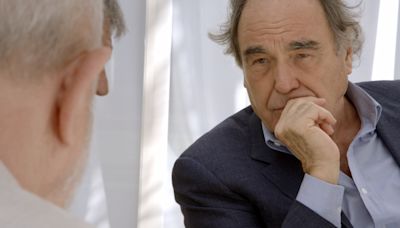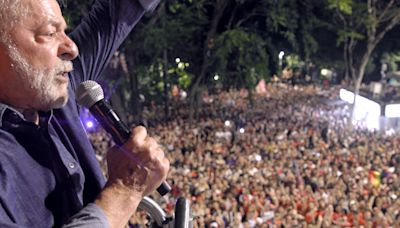Search results
May 16, 2024 · Fidel Castro (born August 13, 1926, near Birán, Cuba—died November 25, 2016, Cuba) was the political leader of Cuba (1959–2008) who transformed his country into the first communist state in the Western Hemisphere. Castro became a symbol of communist revolution in Latin America.
Jorge Ángel Castro was born on 23 March 1949. It was long believed that his birth was in 1956, but Sánchez and another defector uncovered that he was in fact born earlier than Fidelito. While Castro was married to Mirta, he had an affair with Natalia "Naty" Revuelta Clews. Widely regarded in Havana for her beauty, Natalia was married to Dr ...
- Comandante en Jefe
- PCC (from 1965)
- 1953–2016
People also ask
How old was Castro when he was born?
When was Fidel Castro born?
Is Fidel Castro dead or still alive?
Who was Fidel Castro and what did he do?
- Who Was Fidel Castro?
- Early Life
- Early Political Insurrections and Arrests
- Guerrilla War Against Batista
- Turn to Communism
- Bay of Pigs and The Cuban Missile Crisis
- Cuba Under Castro
- The Collapse of The Soviet Union
- Shifting Power and Brother
- Death
Beginning in 1958, Fidel Castro and his forces began a campaign of guerrilla warfare which led to the overthrow of Cuban dictator Fulgencio Batista. As the country's new leader, Castro implemented communist domestic policies and initiated military and economic relations with the Soviet Union that led to strained relations with the United States. Th...
Fidel Alejandro Castro Ruz was born on August 13, 1926, near Birán, in Cuba's eastern Oriente Province. He was the third of six children, including his two brothers, Raúl and Ramón; and three sisters, Angela, Emma and Agustina. His father, Ángel, was a wealthy sugar plantation owner originally from Spain who did most of his business with the Americ...
By 1947, Castro had become increasingly passionate about social justice and he traveled to the Dominican Republic to join an expedition attempting the overthrow of the country's dictator, Rafael Trujillo. Though the coup failed before it got started, the incident did little to dampen Castro's passion for reform, and he traveled to Bogotá, Colombia,...
While incarcerated, Castro renamed his group the "26th of July Movement" and continued to coordinate its activities through correspondence. He and his compatriots were ultimately released in 1955 under an amnesty deal with the Batista government, and he traveled with Raúl to Mexico, where they continued to plan their revolution. In Mexico, Castro m...
Castro implemented far-reaching reforms by nationalizing factories and plantations in an attempt to end U.S. economic dominance on the island. Among these reforms, it was announced that the new government would base compensation to foreign companies on the artificially low property values that the companies themselves had negotiated with past Cuban...
The year 1961 proved to be pivotal in Castro's relationship with the United States. On January 3, 1961, outgoing President Eisenhower broke off diplomatic relations with the Cuban government. On April 14th, Castro formally declared Cuba a socialist state. Three days later, some 1,400 Cuban exiles invaded Cuba at the remote Bay of Pigs in an attempt...
But Castro wasn't shamed for long. In 1965, he merged Cuba's Communist Party with his revolutionary organizations, installing himself as head of the party. Within a few years, he began a campaign of supporting armed struggle against imperialism in Latin American and African countries. In January 1966, Castro founded the Organization for Solidarity ...
After the 1991 collapse of the Soviet Union sent Cuba's economy into a tailspin, Castro's revolution began to lose momentum. Without cheap oil imports and an eager Soviet market for Cuban sugar and other goods, Cuban unemployment and inflation grew. The contraction of the Cuban economy resulted in 85 percent of its markets disappearing. Yet Castro ...
In the late 1990s, speculation began to arise over Castro's age and well-being. Numerous health problems had been reported over the years, the most significant occurring in 2006, when Castro underwent surgery for gastrointestinal bleeding. In a dramatic announcement, on July 31, 2006, Castro designated his brother Raúl as the country's temporary le...
Castro died on November 25, 2016, at the age of 90. His brother and successor Raúl made the announcement of his death on Cuban state television.
Nov 9, 2009 · Fidel Castro: Early Years . Castro was born on August 13, 1926, in Birán, a small town in eastern Cuba. His father was a wealthy Spanish sugarcane farmer who first came to the island during the ...
Jul 21, 2010 · Castro’s Cuba was the first communist state in the Western Hemisphere, and he would retain control of it into the 21st century, outlasting nine U.S. presidents who opposed him with economic ...
- 1 min
Jul 21, 2019 · Fast Facts: Fidel Castro. Known For: President of Cuba, 1959–2008. Born: August 13, 1926 in the province of Orient, Cuba. Parents: Ángel Maria Bautista Castro y Argiz and Lina Ruz González. Died: November 25, 2016 in Havana, Cuba. Education: Colegio de Dolores in Santiago de Cuba, Colegio de Belén, University of Havana.
Nov 26, 2016 · Fidel Alejandro Castro Ruz was born on Aug. 13, ... He then took one final swipe at his old nemesis. Video. transcript. Back. 0:00/1:28-0:00. transcript. Fidel Castro Addresses Cuban Public


